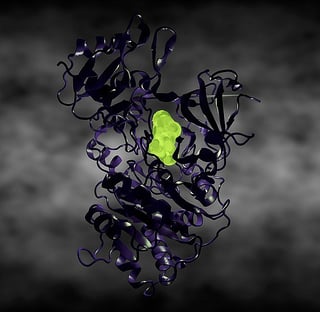 While proteases are essential in maintaining the proper function of living cells, researchers often do not welcome their presence in their protein samples. Why would they when the mere presence of these enzymes jeopardizes the integrity of their samples and puts them one step closer to imminent degradation? No researcher would be happy knowing that there are proteases in their samples, just waiting to chew up on their precious protein, especially if their target protein is low in abundance.
While proteases are essential in maintaining the proper function of living cells, researchers often do not welcome their presence in their protein samples. Why would they when the mere presence of these enzymes jeopardizes the integrity of their samples and puts them one step closer to imminent degradation? No researcher would be happy knowing that there are proteases in their samples, just waiting to chew up on their precious protein, especially if their target protein is low in abundance.
Thankfully, there is a wide range of protease inhibitors to save the day. With the help of an appropriate inhibitor, you can prevent these proteases from hydrolyzing your proteins as you isolate and purify your sample for subsequent downstream applications (e.g. western blotting, reporter gene analysis, protein activity assays, etc.).
Protease Inhibitors: What Are They and How Do They Work?
Protease inhibitors are biological or chemical compounds that deactivate or block the activity of proteases by reversibly or irreversibly binding to the active site or by modifying their structure. Protease inhibitors can be classified based on the proteases they act upon (i.e. serine proteases, cysteine proteases, aspartic proteases and metalloproteases) and/or their mechanism of action (i.e. reversible and irreversible inhibitors).
Some of the most common protease inhibitors used in the laboratory include AEBSF (4-(2-Aminoethyl)-benzenesulfonylfluoride hydrochloride), aprotinin, bestatin, EDTA/EGTA, leupeptin, pepstatin A and PMSF (Phenylmethanesulfonyl fluoride). Among these inhibitors, AEBSF and PMSF are among the most widely used in the lab. These compounds gained popularity since they do a great job of inhibiting the action of several serine proteases (e.g. trypsin, chymotrypsin, and thrombin), which happens to be the most predominant protease group found in cell and tissue samples.
Tips for Choosing the Right Protease Inhibitor
As mentioned earlier, there is a wide variety of protease inhibitors available today, and their number continues to increase as researchers aim to address the various proteases present in cell and tissue samples. With the sheer number of available options, how can you possibly find the most appropriate protease inhibitor to use for your experiment? Here are some tips that can help you choose the right inhibitor for your particular application.
Use a cocktail. A protease inhibitor cocktail is usually the first and most logical choice when lysing cells, homogenizing tissues or performing any other protocol that compromises the cell membrane and triggers the release of proteases from the cellular compartments. By using a cocktail, you can better protect your protein from the action of a wide range of proteases without spending a lot of time and go through costly trial and error to find the right inhibitor. Protease inhibitor cocktails are also popular among scientists for their inherent reliability and reproducibility.
Using a protease inhibitor cocktail also comes highly recommended if you want to preserve your protein without compromising cell health. Just make sure that your chosen cocktail contains inhibitors for all types of proteases and that these inhibitors can be easily removed from the sample once the purification process is completed.
Go for the laser-targeted approach. Different inhibitors work differently so there may be times when you need to determine which proteases to block before choosing the appropriate inhibitor.
Start broad before narrowing your focus. Some researchers prefer using a pre-formulated protease inhibitor cocktail at first to take care of their proteolysis problems. If this doesn’t work, they follow it up with a more targeted approach for the tissue and protein of interest.
Related Blogs






